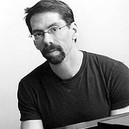 There were a lot of good excuses to go hear the Fred Hersch trio twice during their recent residency at the Village Vanguard. Here’s mine: I went to the late set on Wednesday, had one glass of wine, and after three tunes pretty much passed out. Even imagining Connie Crothers (whom I spotted sitting up in the VIP section) shrunk to the size of a garden gnome, straddling my neck and boxing my ears, shouting, “Wake up! Wake up!” did me no good.
There were a lot of good excuses to go hear the Fred Hersch trio twice during their recent residency at the Village Vanguard. Here’s mine: I went to the late set on Wednesday, had one glass of wine, and after three tunes pretty much passed out. Even imagining Connie Crothers (whom I spotted sitting up in the VIP section) shrunk to the size of a garden gnome, straddling my neck and boxing my ears, shouting, “Wake up! Wake up!” did me no good.
I rationalized the whole thing beautifully: the oppressive heat, the early-morning workout, the late-afternoon gardening. The wine. I was a victim of circumstance; I deserved to go see Fred Hersch again. In fact, I owed it to Hersch to go again. My conduct at the Vanguard that night had been nothing short of despicable. I had disrespected the man. I mean, it’s not like I started snoring or anything (at least I don’t think so). But you don’t go hear an artist of Hersch’s caliber and spend half the set fighting to stay awake. When it was over, I had the odd feeling that I should go up to him and confess.
On Sunday, devout opportunist that I am, I made sure to do everything right. Light dinner. Early set. And unlike Wednesday, I didn’t make a reservation. In fact, until I walked out of the restaurant, and felt the weather starting to break, the light breeze, and looked up at the trestle of the red train at 125th Street, I wasn’t convinced that I was actually going to go.
It was the trio’s last night, though not their last set—it was the nine instead of the eleven, and only fifteen minutes before the hour by the time I arrived. I was surprised to find the place almost packed; Wednesday the reservation had been unnecessary, but tonight they were putting chairs where there were no tables, seating people in the spaces you usually use to cross your legs.
You’ll say it was just a self-deluded attempt at spontaneity, or the catharsis following expiation, or the sheer fact that I was alert, that made the Sunday-night set not only better than Wednesday’s, but one of those rare birds you only catch a few times a year, and that if you’re lucky.
You would be wrong.
Not to say that all of the above weren’t factors. We have a tendency to undervalue the role of the listener, and automatically attribute a great musical experience solely to the artist, rather than to the confluence of circumstances that drove the two together, musician and listener, down fog-dense alleys of memory and imagination, experience and culture, and into each other’s arms. (Writes the critic, “Rollins was uninspired that night.” Indeed, Mr Critic? Perhaps you were uninspired, and Rollins was just Rollins.)
It’s just that there were so many other indicators. Time, for example. Hersch played barely an hour on Wednesday, twenty minutes longer on Sunday. And when the lights came up, the trio received a standing ovation. I can’t remember the last time I saw a standing ovation at a jazz club. It was the best kind, too, where the crowd rises in a bunch to its feet, like released balloons. A sudden updraft of joy. Even Hersch seemed taken aback, and stayed to play an encore—another rarity at the big clubs, even at the Vanguard, which is still far and away the best of them.
And then I could see it on the faces of the musicians that night, particularly John Hebert on bass. Not that I needed to—like the applause, it was just a confirmation of what I was hearing. They nodded and smiled at each other across the bandstand, and we listened to a good marriage turn into a honeymoon, under the fickle tap of some fairy godmother’s wand.
Maybe it was because they’d been playing together all week, and we were hearing the fruits of this, a miraculous collusion of wills.
Maybe the song list was just better, though both sets started with a Cole Porter tune, and both ended with Hersch’s arrangement of Irving Berlin’s “Change Partners.” The Sunday set followed the Porter with “Sad Poet,” a Hersch composition dedicated to Antonio Carlos Jobim; two brand-new originals; two ‘60s tunes by Wayne Shorter; and another ballad, before the Berlin. The encore was “Valentine,” another original, which Hersch played solo.
Maybe it was the weather. Before beginning, Hersch thanked the club for the AC, but we could tell the heat was lifting, and were giddy about going home to sleep with the windows open. The music was just a foretaste of that liberation.
Maybe they drew the energy from the full house. Maybe their stars were aligned.
Maybe, maybe, maybe.
*
There are actually all sorts of good excuses to go see Fred Hersch twice that have nothing to do with me, or with the fact that he’s a genius. Here’s one: a few years ago, Hersch, who has been living with HIV since the mid-‘80s, suffered a particularly bad bout with the illness, became delusional as the virus migrated to his brain, and was in a coma for two months (see the excellent New York Times profile of January 28, 2010). It’s something of a miracle that he lived, and that he could learn to eat again, let alone play the piano. In fact, when I emailed a friend to tell him I was going to see Hersch, he cited health issues as a reason not to miss the opportunity.
Not that Hersch looks unhealthy per se. More toughened. He comes to a point, like a Giacometti sculpture. You can see the knotted wires of the muscles in his arms and the bones in his cheeks. One senses the same about his music: there is no waste. Not that the music is austere. It’s just not flashy. Play has an economy of its own, which isn’t (necessarily) one of excess.
It’s an eclectic and beautiful music, one filled with the echoes of a wide range of inspirations. I hear Debussy and Schumann (on Sunday, the last movement of the Opus 17 fantasy), Monk, Tommy Flanagan. Of course, the differences are just as important. Take Monk: an easiness with time about both pianists. But Monk flaunts it, dances around the beat, teases it, syncopates the syncopation—which is not at all the same thing as landing back on the beat. If Monk keeps his own time, keeps Monk-time, keeps winding that broken watch, there is something about Hersch’s playing that is without time, in both senses of that word. He’s careless about time, as if in his absorption with a particular phrase or trill he could forget it, at least momentarily. He says, “You go on ahead; I’ll catch up.”
It’s not just escaping time; it’s controlling it, although these are certainly related ideas. After Wednesday’s first ballad, a standard, Hersch chided other pianists for not playing it slowly enough. That is: they should take their time. Play it slowly, and soon the second-hand moves like the minute, the hour. And then not at all. And then all the emotion seeps into the piece between the notes, like water through cracks in wood.
Time isn’t the half of it. A left hand that is colorful but never solicitous, as Hersch’s ex-student Brad Mehldau’s can sometimes be (often, I admit, to my delight). The occasional use of octaves in his phrasing, the quirky trills. The density of his harmonic imagination, and the range of his compositional one—“Jackalope,” my favorite of the new tunes, features a funky 7:8 melody that somehow manages to settle, without changing the meter, into an incredible swing. The passing quote from “Softly as in a Morning Sunrise,” so much a part of the improvisation that it refused to call attention to itself, stalked off almost before I realized I’d heard it. The beginning of the Berlin arrangement, spidery phrases at the top of the keyboard I had to wrinkle my nose at. The sheer number of beautifully-pruned fingerpaths between two notes, all of them redolent and surprising.
But I don’t want to give the impression that the band is only a platform for Hersch. Hebert took some gorgeous, lengthy solos; I particularly appreciated his feeling for ornament, the fretless slides between notes sometimes recalling an electric bass, while his generous use of intervals reminded me that the instrument is, like the piano, rich with polyphonic possibilities. And Eric McPherson is a softspoken miracle at the drums. Even his outbursts are measured. His first solo, over the Jobim outro, was executed on brushes; it’s the sort of thing a lot of drummers would have beat the crap out of their kits to play. His sense of color, the variety of sounds he gets out of his kit, is also striking: from brushes to sticks to mallets, to letting his hi-hat ring like a Chinese gong … and after all that color, a big solo that eschewed the demolition derby (crashes and rolls) for a single, off-kilter beat that grew increasingly more frenetic and complex.
*
Maybe it was because this was the penultimate set, and this is a trio that burns brighter when it senses the end is near. For Hersch, of course, this is particularly apropos, and much has been made of the way the illness changed his attitude and approach toward his music, his turn toward heightened lyricism, and his fear that each new record might be his last.
But then before starting Sunday’s set, Hersch remarked that he couldn’t believe how quickly the time had gone. He asked the club for two weeks next time.
Two weeks! So maybe the opposite is true: not that every album might be his last, but rather that, like Scheherazade, as long as he keeps playing, the end will keep receding. Same thing, except the power balance is shifted. And maybe that’s the reason they never got the endings quite right, the ta-da chord always a little staggered from the cymbal crash. The story’s not over; there’s too much left to say. There’s a next time, a second chance, a second week, a second set.
If we didn’t believe him, all we had to do was listen to him play.
You go on ahead. I’ll catch up.
I didn’t stay for the eleven o’clock set. I guess I, too, refuse to believe in endings. And I fully expect to see him here next year, for two weeks—four sets, why not? I know I’m not the only one. I like to think that’s our little contribution to the equal parts grace and determination that have kept him going so far: a house full of faith.

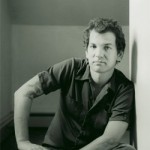
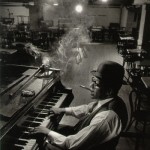
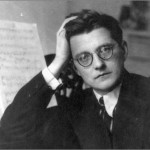
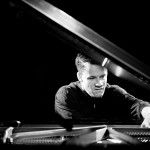
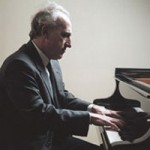
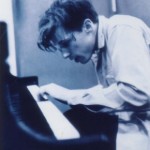 What struck me listening to the English Suites this time around (the Glenn Gould recording from 1977) is how different they are from each other. Each has its own personality. The second, for example, is expansive and refined, the first with such a long, imposing prelude, culminating in at once the most soaring and static (cathedral-like?) of gigues.* The third is the polar opposite of the second: it is hardly adorned, building patiently on its musical phrases, giving the performer time to settle them at his leisure. The fourth is expansive like the second, but of a romantic mood. The fifth sounds almost impossibly modern. I don’t know why it strikes me this way; Bach was hardly a stranger to chromaticism. As for the sixth, where to begin? At the end, maybe. The gigue is haunting. But here, I particularly appreciate the playful gavotte that directly precedes it: it sounds like children marching.
What struck me listening to the English Suites this time around (the Glenn Gould recording from 1977) is how different they are from each other. Each has its own personality. The second, for example, is expansive and refined, the first with such a long, imposing prelude, culminating in at once the most soaring and static (cathedral-like?) of gigues.* The third is the polar opposite of the second: it is hardly adorned, building patiently on its musical phrases, giving the performer time to settle them at his leisure. The fourth is expansive like the second, but of a romantic mood. The fifth sounds almost impossibly modern. I don’t know why it strikes me this way; Bach was hardly a stranger to chromaticism. As for the sixth, where to begin? At the end, maybe. The gigue is haunting. But here, I particularly appreciate the playful gavotte that directly precedes it: it sounds like children marching.
